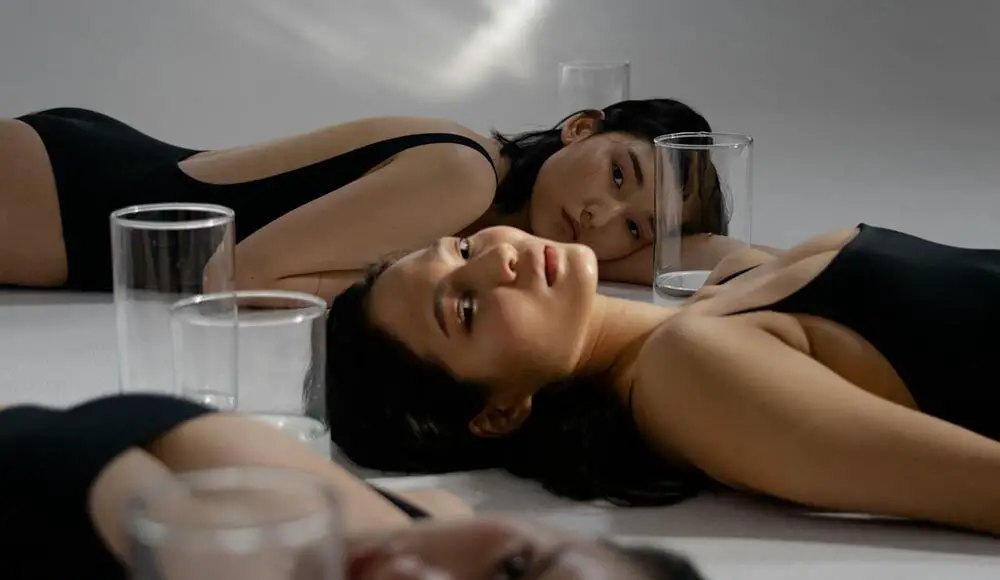Composition and lighting are the fundamental aspects of every photography style and genre, including portraits.
Composition in portrait photography refers to the elements’ arrangement within the frame. Its impact goes beyond aesthetic appeal. It prevents visual overload. Light, angles, and framing can tell stories. Their balance evokes emotions. It naturally guides the viewer’s eye. The composition emphasizes your subject’s presence and personality.
This article covers practical recommendations, creative ideas, and essential composition tips. It aims to help professional photographers and hobbyists create fascinating portraits.
Photography Composition Rules
The Rule of Thirds
While centering your subject can create symmetry, overusing this approach makes your portraits unemotional and flat. The Rule of Thirds teaches photographers to place the main subject off-center without ruining the cohesive appeal.
This rule involves dividing your frame into four lines, two vertical and two horizontal. These lines form a nine-segment grid. Position your subject along these lines or at their intersections. It will make the final picture dynamic and engaging without ruining the visual balance.
Placing the subject too low or too high in the frame can ruin the overall harmony in portraits. Too much or too little space above the head can make your composition heavy and unbalanced. Consider placing your model’s eyes at the upper third of the frame. You can further enhance the subject’s eyes in your photo beauty editor to define them as your image’s focal point, naturally drawing the viewer’s attention to the person’s facial expression.
Leading Lines
This portrait composition principle directs the viewer’s gaze to the most important elements of the picture. Lines, from roads to architectural details or even subtle shadows, provide a sense of direction. This trick can add an additional layer of context to your image, making it deep and meaningful.
Knowing how to set up studio lighting, you can create leading lines with props and backdrops or strategically brighten and obscure particular elements. For instance, a well-positioned softbox can cast diagonal or converging shadows directly on your subject’s face to emphasize their features. Control the illumination’s direction and intensity for the proper emotional tone. Soft, directional lighting paired with leading lines can evoke intimacy and warmth, especially when combined with warm-toned clothing. Meanwhile, harsher, angular lighting might suggest strength or intensity.
Framing the Subject
Framing involves using elements within the scene—like doorways, windows, or foliage—to surround and highlight your subject. Understanding how to take portraits using framing techniques will help you draw focus and provide an additional storytelling element to your visuals. Adjust the distance between the model and the frame. Portrait shooting through a slightly open door can create a sense of intrigue. Using symmetrical elements like archways can enhance overall harmony and balance. Light and shadow patterns within the frame can highlight your model’s complexion or pose.
Practical Tips
1. Choose Simple Backdrops
Pay close attention to what is behind your model. Opt for a neutral, uncluttered background with no distracting elements. Mind that it should complement your model’s face instead of overpowering it. Even small elements, like a stray object or an awkwardly placed tree branch, can disrupt the balance of your image. In outdoor settings, use a shallow depth of field to blur the background while maintaining the model’s face in focus. In a studio, experiment with solid backdrops or minimal props.
2. Utilize Negative Space
The area surrounding your subject can create balance and emphasize its most prominent features without excessive visual overload. Leaving more space on one side of the frame can evoke a sense of movement. Additionally, using a vast expanse of sky or an open field as negative space can convey isolation and serenity. This trick is particularly effective for visual narratives. Let the space hint at the model’s environment or emotions.
3. Direct the Viewer’s Gaze
Ensure your subject guides the viewer’s focus within the frame. Additional elements should not overwhelm viewers and overpower the most important parts. Keep your composition clean and uncluttered. Remove unwanted distractions and prioritize your subject, particularly their eyes. Depending on the intended message, your model can look directly into the lens or gaze off-camera. The first variant evokes intimacy, while the second introduces an authentic, candid vibe. Align your model’s eyes with the key compositional elements to maximize the emotional impact.
4. Experiment with Angles and Perspectives
Eye-level shots work great, but you don’t have to stick to them. Try shooting from above, below, or at unexpected angles. It will add depth and context to your photos, demonstrating your creative versatility. Use angels creatively to convey emotions. A slightly higher perspective can emphasize innocence or softness, while a lower angle might convey power or confidence.
Conclusion
Understanding the principles of balance, framing, and perspective can transform your mediocre portraits into works of art. In portrait photography, thoughtful composition is key to successfully capturing your model’s emotions and personality. As you experiment with techniques and creative ideas, balance your unique creative vision with technicalities, and be ready to captivate the audience with your mesmerizing visual stories!
##




